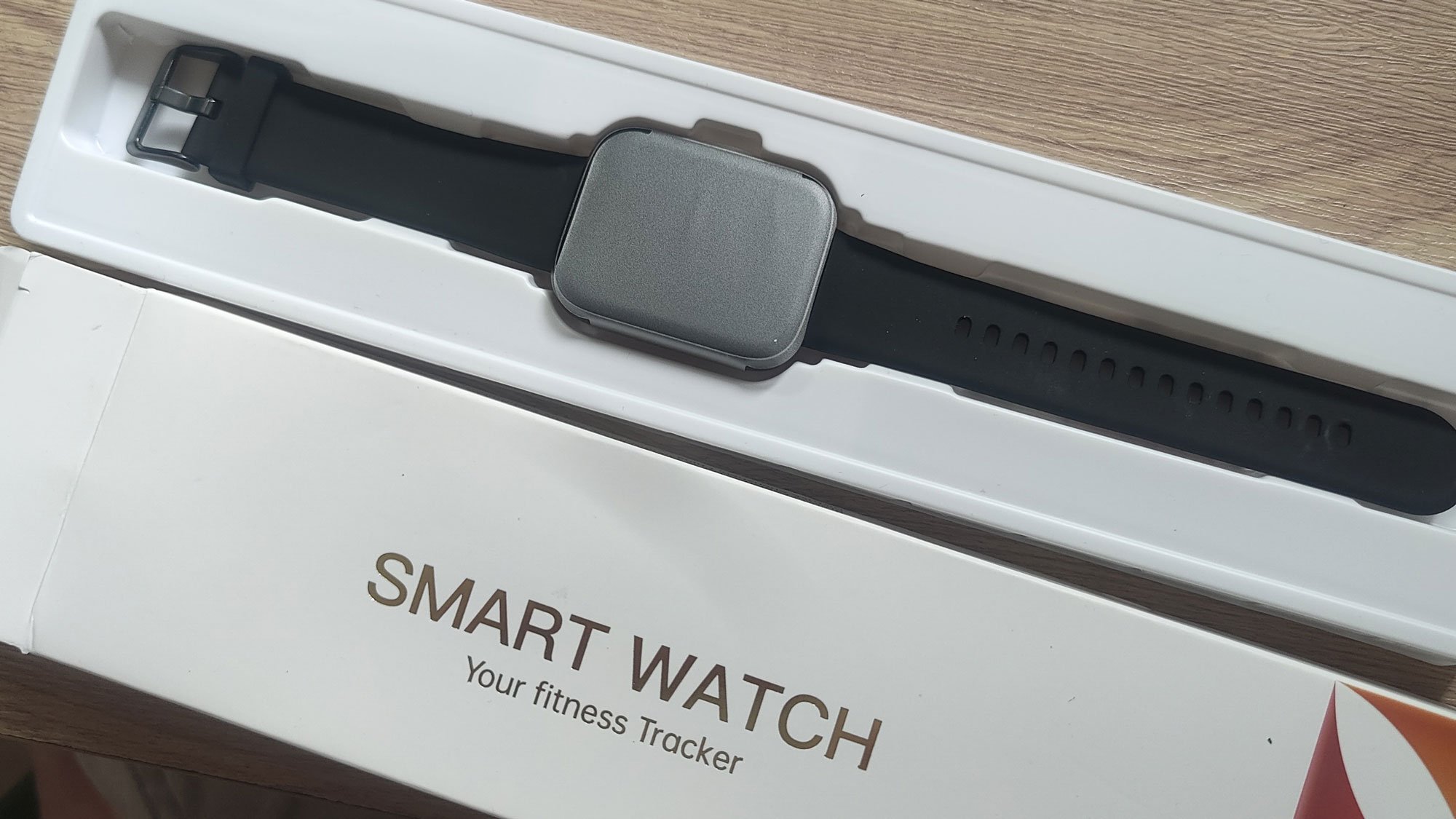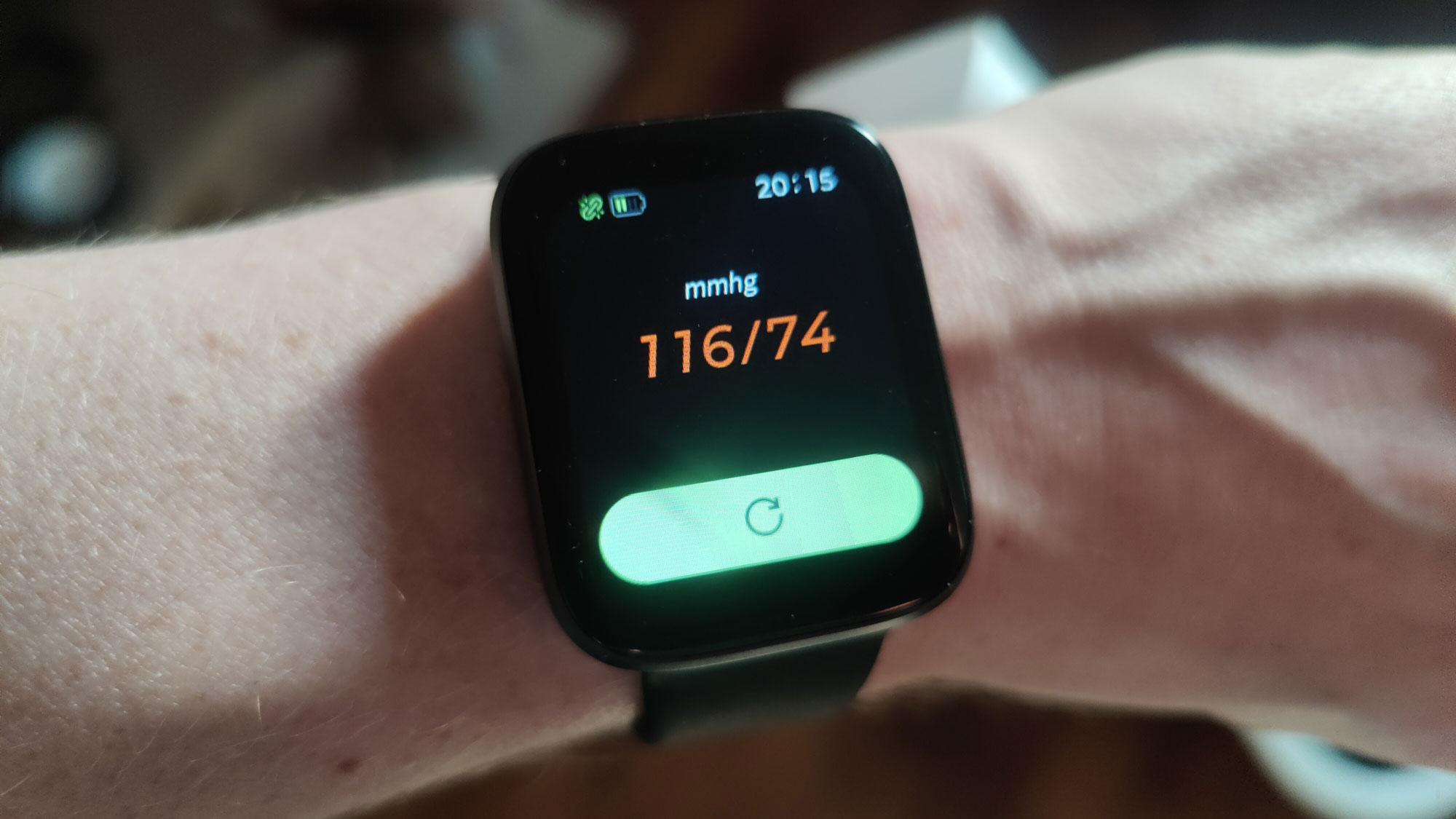I bought this cheap Apple Watch rival and I’m weirdly impressed
$20 challenge: This cheap Apple Watch clone has merit, but it’s not quite accurate enough

I’ve tried lots of the best cheap fitness trackers, but none quite as cheap as the AcclaFit Smart Watch Fitness Tracker, which cost me a mere £19.99 on Amazon UK. (It's also available on Amazon US for $23.99).
The AcclaFit is essentially a very, very cheap clone of the best Apple Watches, with a basic interface and capabilities. But for such a low price, could it really perform well enough to be worth buying?
There comes a threshold with low-price smartwatches and fitness trackers in that the cheaper they get, the more corners get cut. Eventually, the data they provide simply stops being accurate, as they’re made with outdated or poorly-constructed sensors.
This is the second in a regular series of articles in which we test really cheap gadgets to see if they're worth even the small amount of money you'll pay for them. Read them all here.
However, in order to determine accuracy, I’ve got to treat the cheap AcclaFit Smart Watch like any other watch that merits review: by examining its specs and comparing it to an industry leader.
So that’s what I did: on one wrist, I wore the AcclaFit, and on the other, my top-of-the-range Garmin Epix Pro, which costs around 40 times the price. Let’s see how the AcclaFit measured up.
AcclaFit Smart Watch: In a nutshell
The AcclaFit is a Chinese-made fitness tracker made to resemble an Apple Watch. It has since increased slightly in price by a couple of pounds, but at the point of purchase it was £19.99. Check out the full specs below:
| Component | AcclaFit Smart Watch |
| Price | $19.99 / £19.99 / AU$38 approx |
| Weight | 82g |
| Case/bezel | Plastic/metal (unlisted) |
| Display | 1.69-in TRT color touchscreen |
| GPS | None |
| Battery life | Up to seven days |
| Connection | Bluetooth 4.0 |
| Water resistant? | Yes, IP68 |
AcclaFit Smart Watch: Design

I was pleasantly surprised by what I found when I opened the AcclaFit's box. I was expecting something truly awful, like the last bargain bin fitness tracker to cross my desk. This looked… fine. At 82 grams with a plastic backing, a three-piece sensor array, and a metal band around the case, it felt more premium than it had any right to be. The silicone strap felt like one you could pair with an Apple Watch without noticing a dip in quality, and it was comfortable to wear – even while sleeping.
Sign up for breaking news, reviews, opinion, top tech deals, and more.
The 1.69-inch color touchscreen is also fine, to a point. The big problem is the refresh rate, which is abysmal. This occasionally makes controlling the watch difficult, as a single tactile button isn’t enough for cycling through the options.
And there are lots of them. As the box states, you get lots of different sports modes, a step counter, calorie counter, HRM, call alert, Find My Phone functionality, sleep tracking, and call and message notifications. All quite impressive, in theory.

As you might imagine, the watch's UX design offers nowhere near the level of polish of more expensive trackers. The same can be said of the accompanying GloryFit app; it doesn't compare favorably to something like Fitbit Premium, which displays historic data and packages information incredibly well. But while you don’t get as comprehensive a data set here, all the information on activity and sleep is at least simple to access: the app presents information in a sensible, logical fashion. You’d be surprised how many fitness trackers stumble at this seemingly basic hurdle.
True, there are some spelling mistakes likely to do with translation in the app, and the refresh rate and touchscreen controls could certainly be improved, but overall? I was definitely expecting worse, and it’s perfectly usable.
AcclaFit Smart Watch: Features

An impressive amount of features are on offer here for such a cheap watch. You get 24/7 heart rate monitoring, blood pressure (pictured above) and blood oxygen tests, a calorie counter, a step counter, and sleep tracking which differentiates between light and deep sleep.
A selection of around 20 sports modes are on offer here: a surprising amount, even if the lion’s share of them are virtually the same with different labels. They all simply record calories burned and heart rate, with little variation other than the title. With no GPS to speak of, you lose a lot of outdoor running information too, although I certainly wasn’t expecting a £20 watch to pack GPS.
Outside of the fitness stuff, you get call and SMS alerts plus basic alarm functionality. There are also multiple watch faces, including an option to use your own photos. This is a nice touch, and as you can see in the image higher up, I took advantage of this to upload a sailboat photo watch face. The Find My Phone functionality, which allows you to buzz your phone using a functionality on the watch, also worked a treat during my tests.
AcclaFit Smart Watch: Performance

Unfortunately, the AcclaFit falls a little flat when it comes to performance. I wore it for a night and a day, alongside the Garmin Epix Pro, which is unquestionably one of the best Garmin watches available right now. I did a set of press-ups to cause a heart rate spike and waited for things to settle. The AcclaFit was far swingier and didn’t record my heart rate spikes nearly as well, listing a higher result than my Garmin as pictured above, although both watches soon settled down to more or less the same reading.
The sleep tracking didn’t fare as well. Compared to the Epix Pro, it recorded an extra 20 minutes of sleep and couldn’t gauge rapid eye movement, only light and deep sleep. There was also no indication as to whether its reading was good or bad. You can see both readings in the apps below:

That morning, I took the watch out for a little 10-minute fasted cardio session, using the outdoor run functionalities on both watches. The route I ran was a short 2km lap of my local park. The AcclaFit watch recorded 1.8km ran rather than the Epix Pro’s GPS-generated 2.06km, and very different average speed times – although, interestingly, both estimated a similar calorie burn and step count. You can see it again in the apps below:

The battery, however, was excellent. Cheap gadgets don’t tend to last long, but the 200mAh onboard battery held on well overnight and for a full day afterwards. That was with constant heart-rate tracking and a short run, and it still had enough juice in the tank for me to be able to wear it for at least another night or another run. It's possible its stamina could fade quickly with age, as many cheap devices do, but so far it’s comfortably outlasting all Apple Watches with the possible exception of the Apple Watch Ultra.
AcclaFit Smart Watch: Is it worth it?
Honestly? The AcclaFit Smart Watch was far better than I was expecting, although still not good enough to be really fit for purpose from an accuracy perspective. If you’re looking for something to track your runs and monitor your sleep, it’s probably not for you and I would recommend getting something like a Fitbit Inspire 3 instead. It’s just not accurate enough to be used in this way, which is pretty damning.
However, if all you're looking for is a basic, comfortable Apple Watch clone that can offer a pedometer and calorie counter functionality, notifications on your wrist, a nifty Find My Phone feature, and customizable watch faces, you could do a lot worse. Dedicated runners and fitness fans should of course look elsewhere, but those just trying to get their steps in for the day could certainly do worse.

Matt is TechRadar's expert on all things fitness, wellness and wearable tech.
A former staffer at Men's Health, he holds a Master's Degree in journalism from Cardiff and has written for brands like Runner's World, Women's Health, Men's Fitness, LiveScience and Fit&Well on everything fitness tech, exercise, nutrition and mental wellbeing.
Matt's a keen runner, ex-kickboxer, not averse to the odd yoga flow, and insists everyone should stretch every morning. When he’s not training or writing about health and fitness, he can be found reading doorstop-thick fantasy books with lots of fictional maps in them.